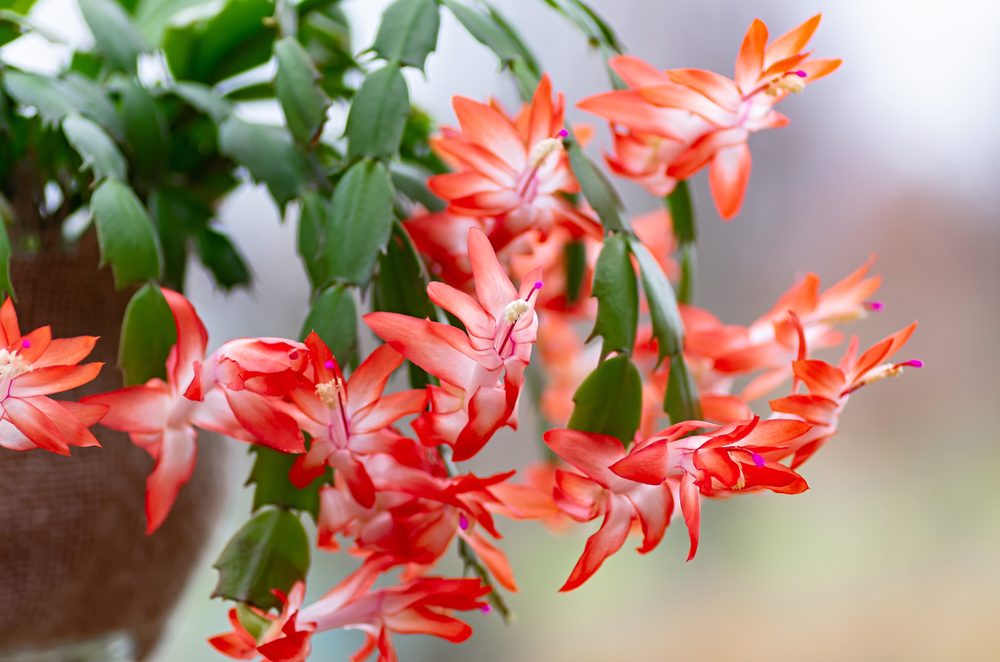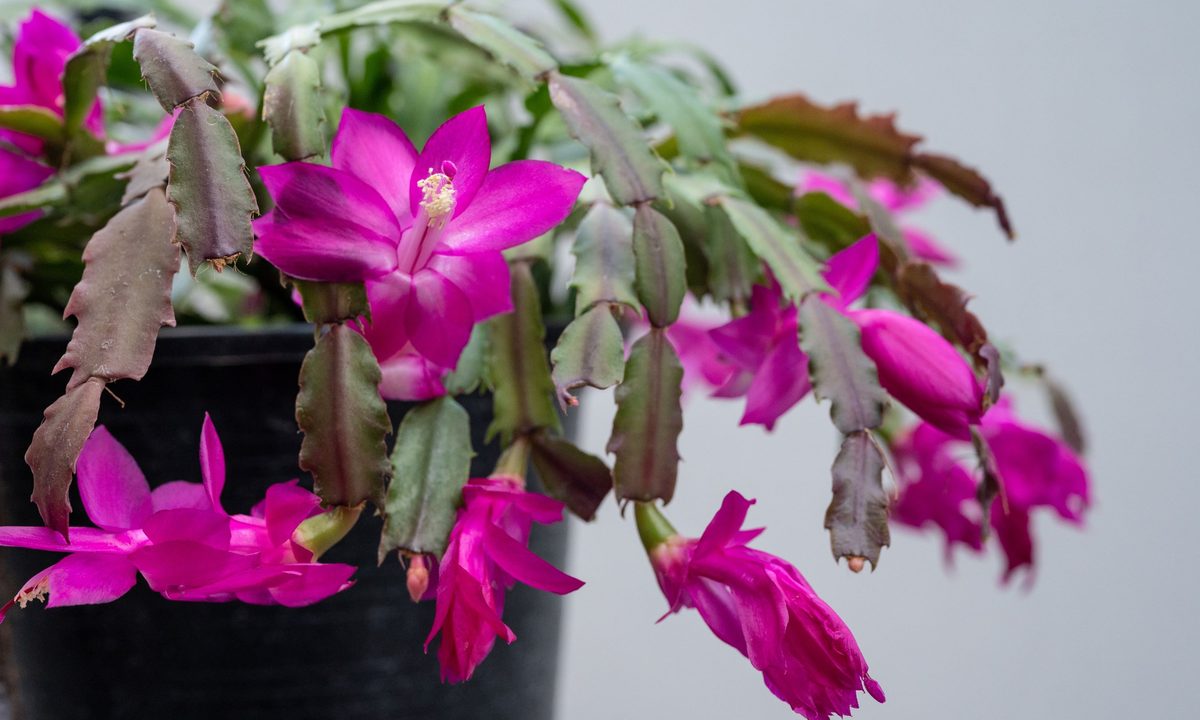If you're looking for a plant to get you into the holiday spirit, you may have heard of a Thanksgiving cactus, the slightly less well-known cousin of the popular Christmas cactus. With low-maintenance care requirements, beautiful flowers, and a lovely shape, it's no wonder Christmas and Thanksgiving cacti are so well liked. These beautiful, easy to care for cacti are sure to brighten up a Thanksgiving dinner, especially as a table centerpiece. Our helpful guide to Thanksgiving cactus care will help you meet all of this holiday plant's needs.

What is a Thanksgiving cactus?
If you plan on giving this plant as a gift or you’ve received one, you’ll want to be sure you know how often to water it and care for it otherwise. These pretty cacti are native to the tropical climates in Brazil and aren’t your typical cactus. They prefer higher humidity levels and soil moisture and don’t like direct sunlight. However, they produce beautiful blooms that come in a range of colors, including pink, purple, white, and peach.
Unfortunately, Thanksgiving cactus often get confused with Christmas cactus. This is mainly because they look so alike and also because they’re mislabeled in stores. The best way to tell if you have a Thanksgiving cactus or a Christmas cactus is by looking at the leaves. The Thanksgiving cactus will have sharp and pointy sides on its segmented leaves, while the Christmas cactus has more rounded sides. Luckily, even if you mislabel these plants, they thrive in similar conditions.

How to care for a Thanksgiving cactus
Here is how to care for this plant so that it can live its best life and provide you with plenty of pretty blooms. Just remember that the Thanksgiving and Christmas cacti like similar conditions, so if you have incorrectly identified which one you have or you just aren’t sure, these care tips will work for both plants.
Step 1: Light.
Unlike most cacti, the Thanksgiving cactus prefers partial light to shady spots. Too much sun can cause the leaves of this plant to wash out and eventually die off. However, when fall rolls around, move the cactus to an area with bright indirect light to help encourage it to bloom.
Step 2: Water.
Although it doesn’t like its roots to sit in water, this cactus does want to be in moist soil. Therefore, it’s important not to let the soil dry out in between waterings, and be sure to thoroughly saturate the soil when you do water.
Step 3: Soil.
The Thanksgiving cactus is adaptable to most soil types but prefers soil that holds moisture a little more than your typical cactus. You could add a bit of peat moss to your generic potting mix to help the soil retain more water. Just be sure that there is a drainage hole in the pot and that the soil isn’t holding onto too much water.
Step 4: Fertilizer.
Feed this cactus during the growing season with a water-soluble or granular fertilizer. Without enough food, the cactus won’t be able to produce those pretty flowers it’s so famous for.
Step 5: Humidity and temperature.
Ideally, the Thanksgiving cactus likes the humidity level to be above 50%. This is much higher than desert cacti, but remember, they’re native to tropical and subtropical climates. The closer you can mimic those conditions, the happier your plant will be.
They also prefer hotter temperatures, but they can deal with temperatures as low as 60 degrees Fahrenheit. To ensure your plant isn’t too cold or too dry, you’ll want to avoid placing it near a drafty door or window and steer clear of air vents as well.

FAQs
Is the Thanksgiving cactus an indoor or outdoor plant?
Although it’s primarily grown indoors, the Thanksgiving cactus can thrive outdoors in zones 10 to 12.
Is this cactus toxic?
These plants were once thought to be highly toxic to pets; however, more recent studies show that they’re only a low toxicity threat to pets. This means it’s best to keep them out of reach of pets, but if your furry pal takes a bite from it, there’s no need to panic.

Encouraging your Thanksgiving cactus to bloom
Proper care will go a long way to ensuring your Thanksgiving cactus blooms every year, but there are additional steps you can take to encourage your Thanksgiving cactus to produce more flowers. Thanksgiving cacti bloom between the middle of fall and the beginning of winter, so mimicking those conditions will signal to your Thanksgiving cactus that it's time to begin blooming.
Lower the temperature in the room your cactus is in until it is in the mid-50s or 60s (Fahrenheit). Make sure your Thanksgiving cactus gets plenty of bright, indirect light during the morning and early afternoon, followed by darkness. This imitates the early sunsets and long nights of fall and winter. Before long, you should begin to see buds forming.

How many times per year do Thanksgiving cacti bloom?
Thanksgiving cacti are known for their flowers during late fall and winter, but is that the only time they bloom? Some Thanksgiving and Christmas cacti will actually bloom a second time in spring. This is because the plants flowers are brought on by a drop in temperature, particularly during the night.
Although spring is warmer than winter, the nights are often still cool, and the temperature difference between day and night can bring about a second bloom. However, this is not a surefire thing. Some plants will react to the shifting temperatures, and others won't. So don't panic if your Thanksgiving cactus only blooms in fall and winter!
Now you have the tools you need to care for your Thanksgiving cactus, and you’ll be able to educate friends and family on how to care for theirs. Be sure to look for the pointy edges on the leaves to identify it as a Thanksgiving cactus correctly, and remember that it’s native to tropical climates and will thrive with more water and humidity than desert cacti.



